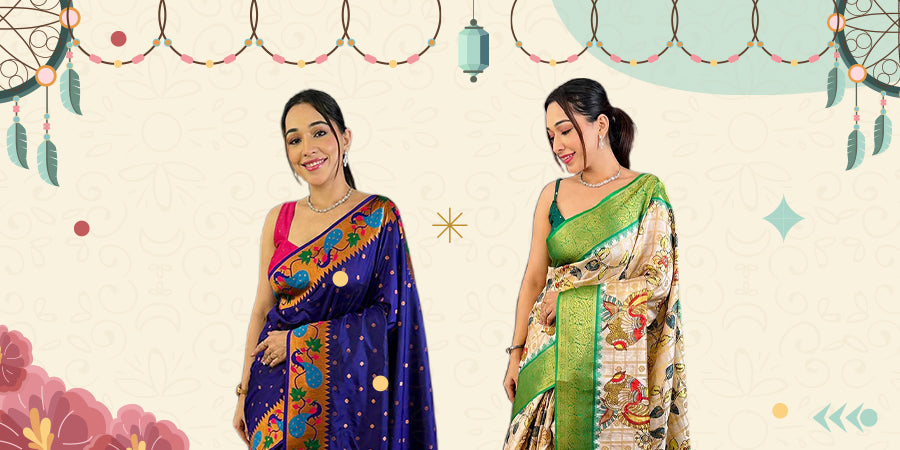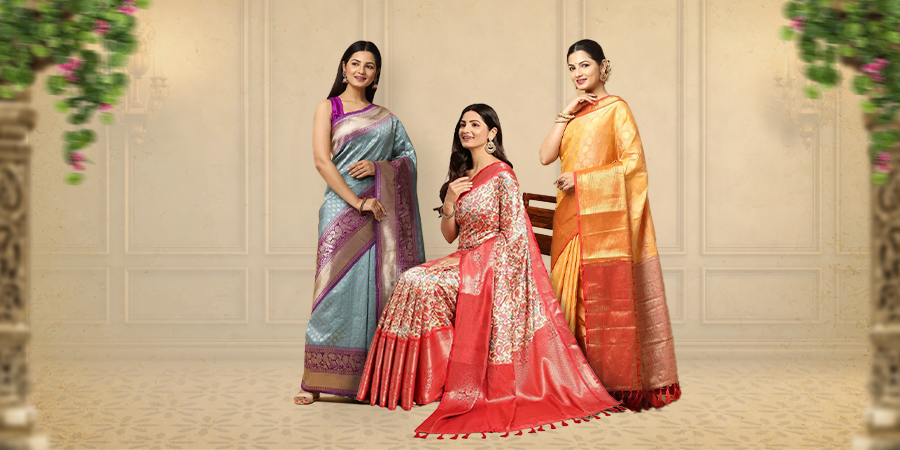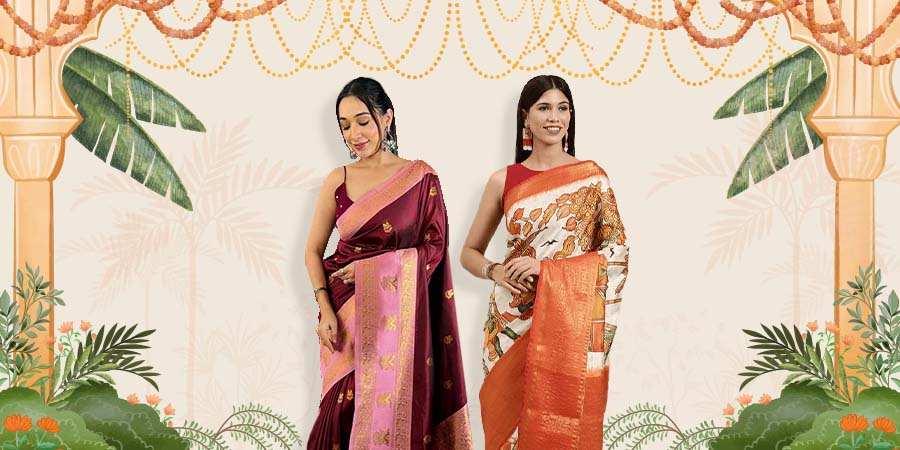
21 Most Popular Types of Sarees in India You Must Know About (With State-Wise Origins)
India is a land of vibrant culture, rich traditions, and unmatched textile artistry. Among its most iconic fashion statements is the timeless saree—a garment that is not just clothing, but an embodiment of heritage. From the intricate weaves of the North to the colourful drapes of the South, every state in India offers a unique saree style that reflects its cultural identity. In this guide, we explore 21 different types of sarees from across India, categorised by region.
Northern India
-
Banarasi Saree (Uttar Pradesh)
Renowned for their luxurious silk and intricate zari work, Banarasi sarees are traditionally woven in Varanasi. Ideal for weddings and grand occasions, they often feature Mughal-inspired motifs like florals, bel, and jhallar.
2. Phulkari Saree (Punjab)
 Phulkari, meaning ‘flower work,’ is known for its colourful embroidery using silk threads. Originally a form of dupatta decoration, this style is now beautifully adapted into sarees.
Phulkari, meaning ‘flower work,’ is known for its colourful embroidery using silk threads. Originally a form of dupatta decoration, this style is now beautifully adapted into sarees.
3. Chanderi Saree (Madhya Pradesh)
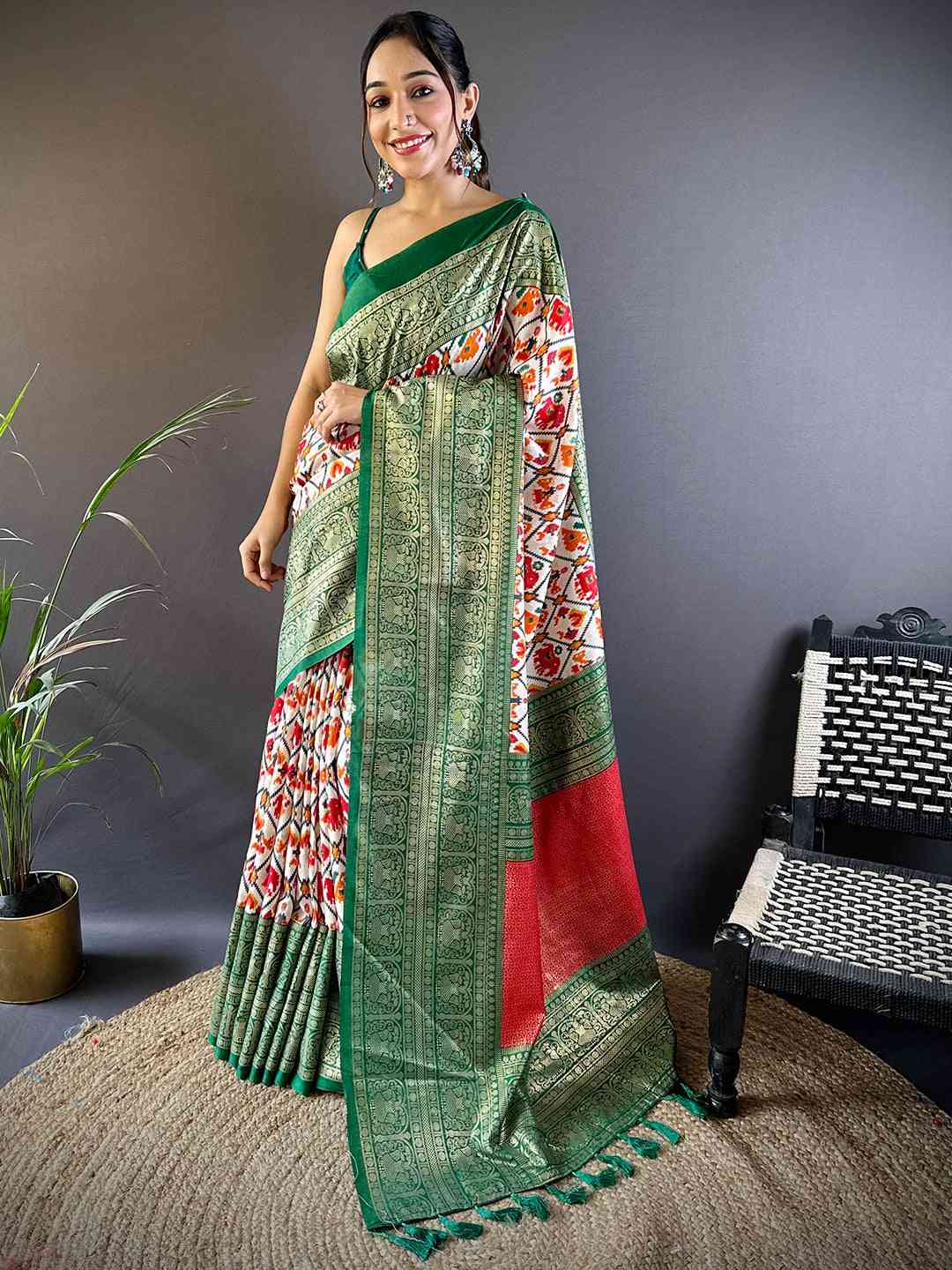 Lightweight, sheer, and elegant, Chanderi sarees blend silk and cotton with subtle zari work. Perfect for festive and office wear.
Lightweight, sheer, and elegant, Chanderi sarees blend silk and cotton with subtle zari work. Perfect for festive and office wear.
4. Bhagalpuri Saree (Bihar)
 Made from tussar silk, Bhagalpuri sarees are known for their rich texture and natural shine. They're eco-friendly and perfect for all seasons.
Made from tussar silk, Bhagalpuri sarees are known for their rich texture and natural shine. They're eco-friendly and perfect for all seasons.
Western India
5. Bandhani Saree (Gujarat & Rajasthan)
 Crafted using a tie-dye technique, Bandhani sarees are colourful, dotted wonders often worn during Navratri and weddings.
Crafted using a tie-dye technique, Bandhani sarees are colourful, dotted wonders often worn during Navratri and weddings.
6. Patola Saree (Gujarat)
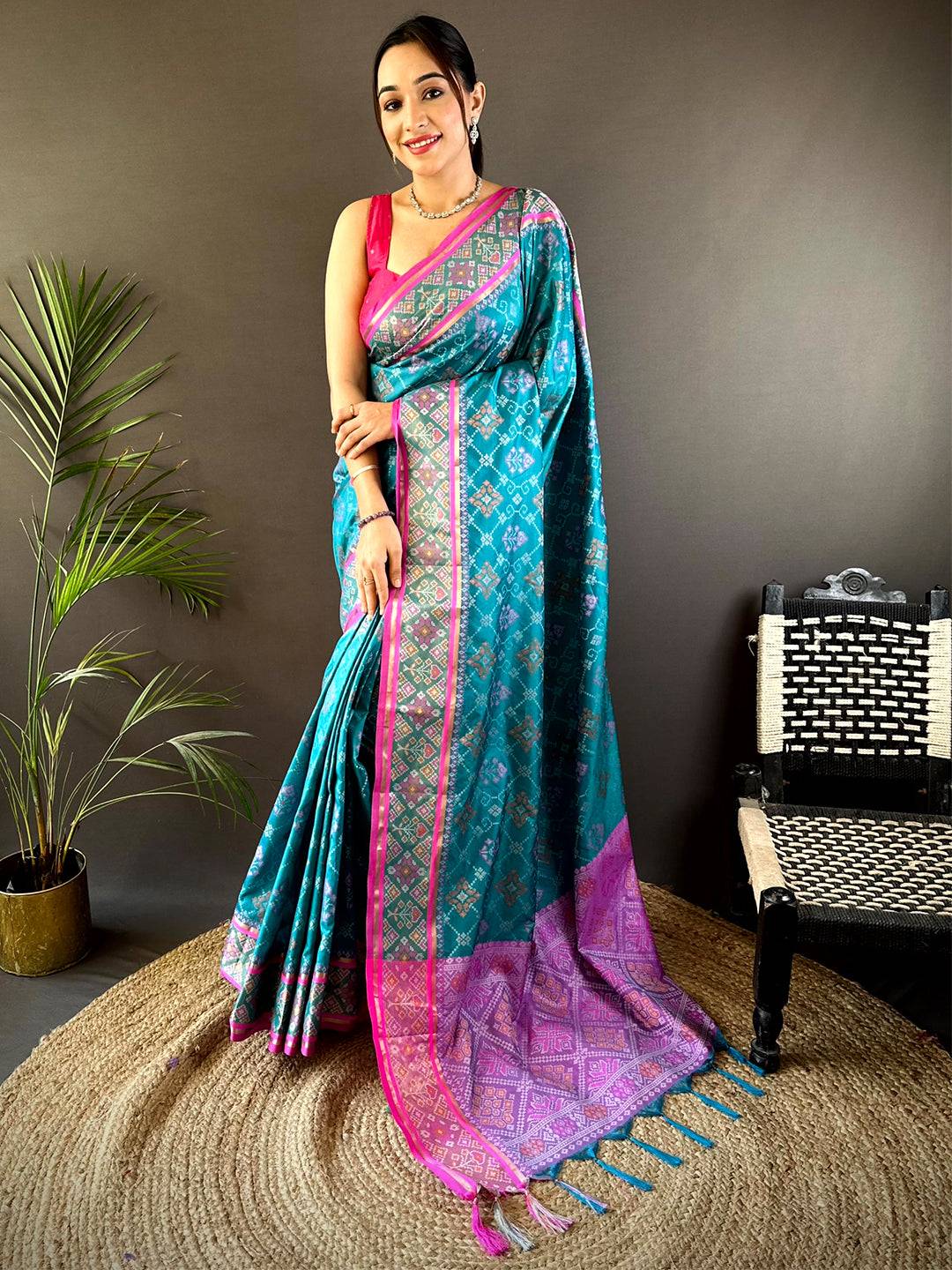 A luxury double-ikat weave from Patan, Patola sarees are known for their precision, symmetry, and intricate geometric designs.
A luxury double-ikat weave from Patan, Patola sarees are known for their precision, symmetry, and intricate geometric designs.
7. Paithani Saree (Maharashtra)
 These regal Paithani silk sarees feature peacock, lotus, and floral motifs in pure zari, making them a bridal favourite.
These regal Paithani silk sarees feature peacock, lotus, and floral motifs in pure zari, making them a bridal favourite.
8. Yeola (Maharashtra)
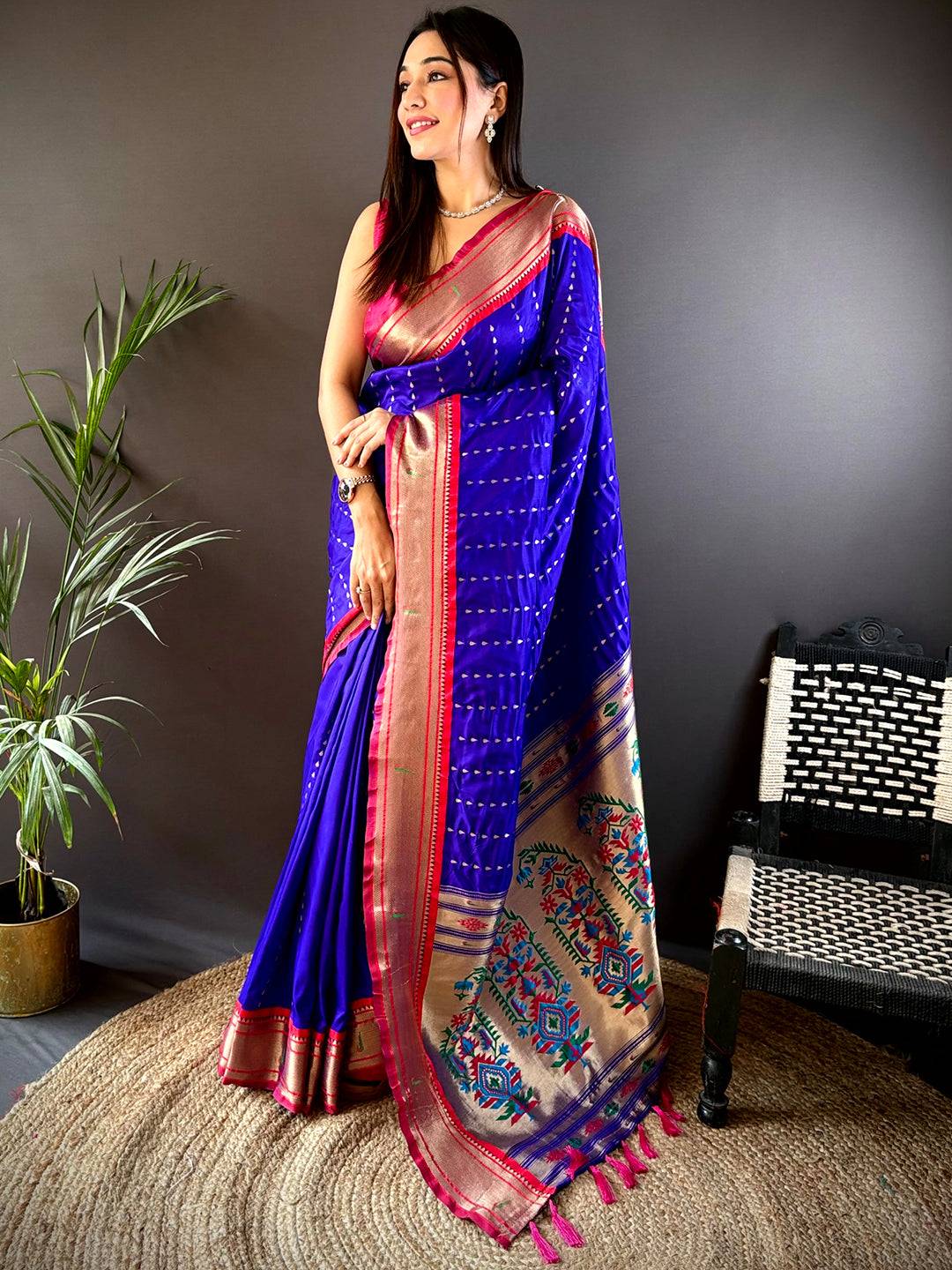
This saree symbolises strength and grace. Worn traditionally by Maharashtrian women during folk dances and rituals.
Southern India
9. Kanjeevaram Saree (Tamil Nadu)
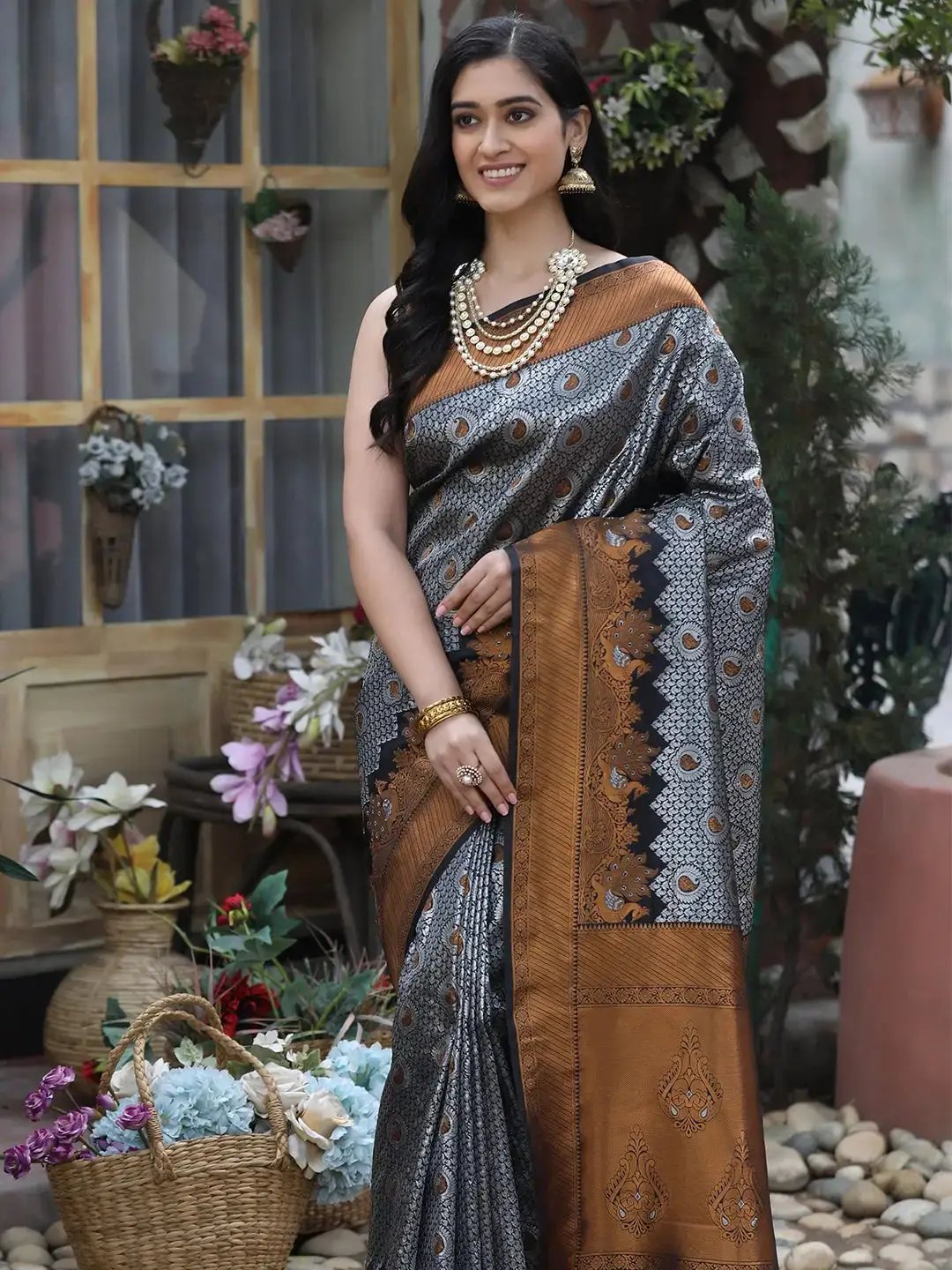 Known for their shine, weight, and durability, Kanjeevaram sarees are made with pure mulberry silk and feature wide borders with temple or mythological designs.
Known for their shine, weight, and durability, Kanjeevaram sarees are made with pure mulberry silk and feature wide borders with temple or mythological designs.
10. Pattu Saree (South India)
 Pattu means ‘silk’ in Tamil. These are festive and bridal silk sarees crafted from high-quality silk, common in Tamil Nadu, Andhra Pradesh, and Kerala.
Pattu means ‘silk’ in Tamil. These are festive and bridal silk sarees crafted from high-quality silk, common in Tamil Nadu, Andhra Pradesh, and Kerala.
11. Gadwal Saree (Telangana)
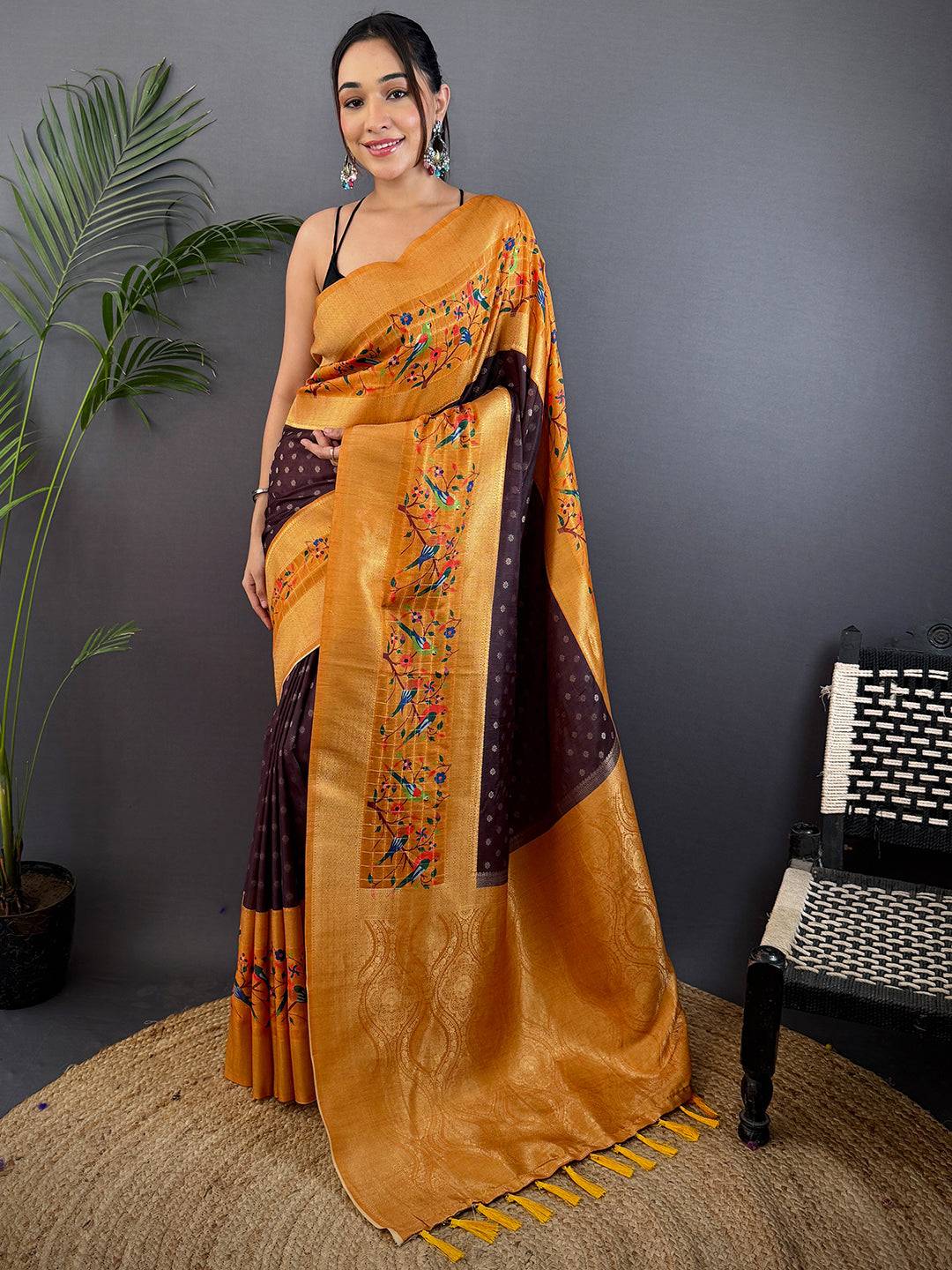 A unique blend of cotton body and silk pallu, Gadwal sarees are lightweight yet royal, often worn during religious ceremonies.
A unique blend of cotton body and silk pallu, Gadwal sarees are lightweight yet royal, often worn during religious ceremonies.
12. Pochampally Saree (Telangana)
 These sarees use the ikat technique and are famous for their bold, geometric patterns woven in cotton or silk.
These sarees use the ikat technique and are famous for their bold, geometric patterns woven in cotton or silk.
13. Narayanpet Saree (Maharashtra & Telangana border)
These sarees feature checks or striped patterns with simple temple borders and are typically crafted in both silk and cotton.
14. Kalamkari Saree (Andhra Pradesh)
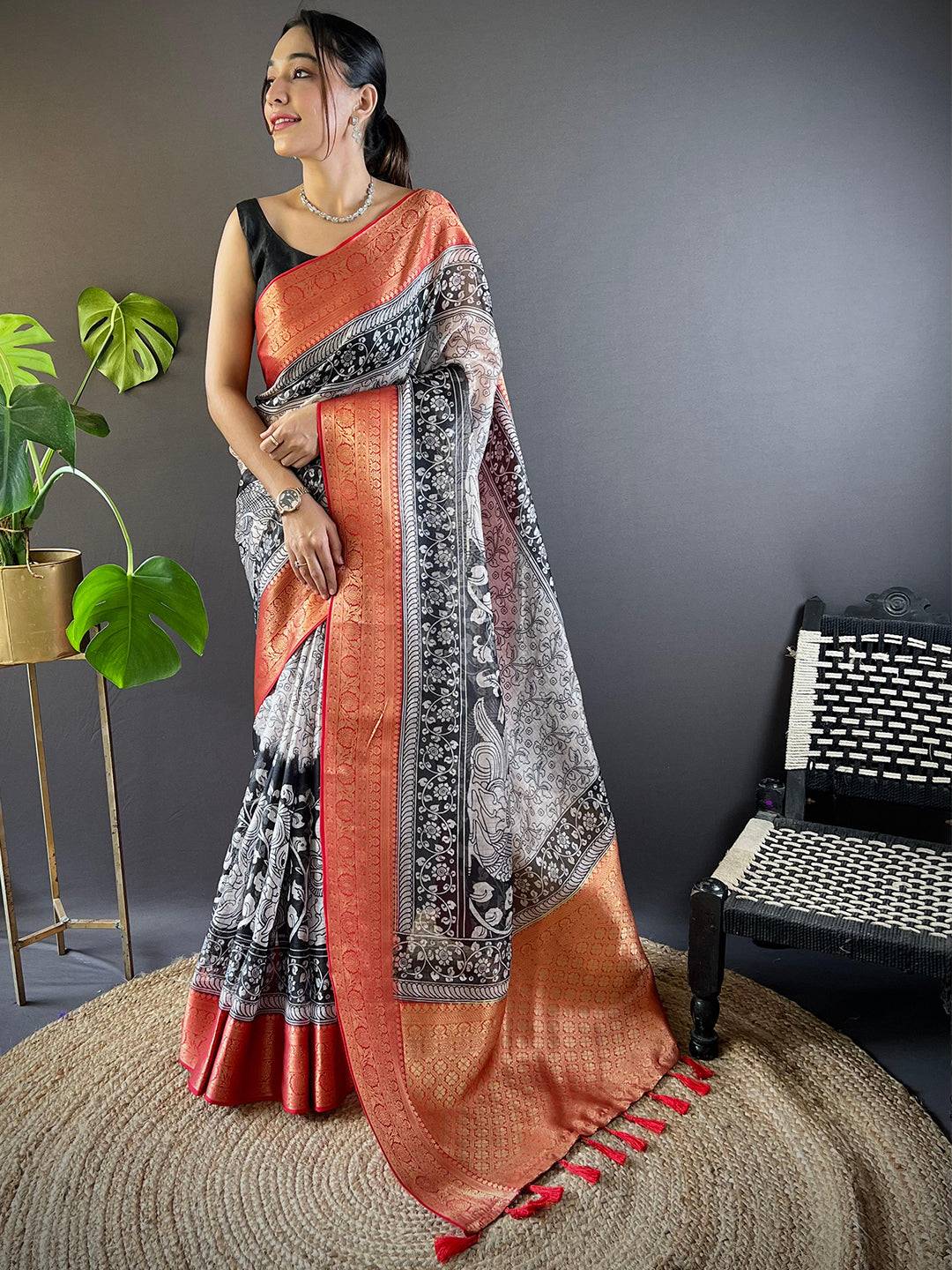
Kalamkari sarees are hand-painted or block-printed with mythological and floral motifs using natural dyes. They reflect artistic tradition and storytelling.
Eastern & Pan-India Textile Styles
15. Baluchari Saree (West Bengal)
 These silk sarees often depict mythological tales on the pallu and are prized for their artistic storytelling through weave.
These silk sarees often depict mythological tales on the pallu and are prized for their artistic storytelling through weave.
16. Bengali Saree (West Bengal)
Often referring to traditional red-and-white sarees like Garad and Tant-inspired designs, Bengali sarees are deeply tied to the culture of Durga Puja and celebrations.
17. Odishan Sarees (Odisha)
An umbrella term for the many handloom styles from Odisha, including Pochampally, Bomkai, and Khandua. They often use ikat dyeing with symbolic motifs.
18. Pichwai Saree (Rajasthan)
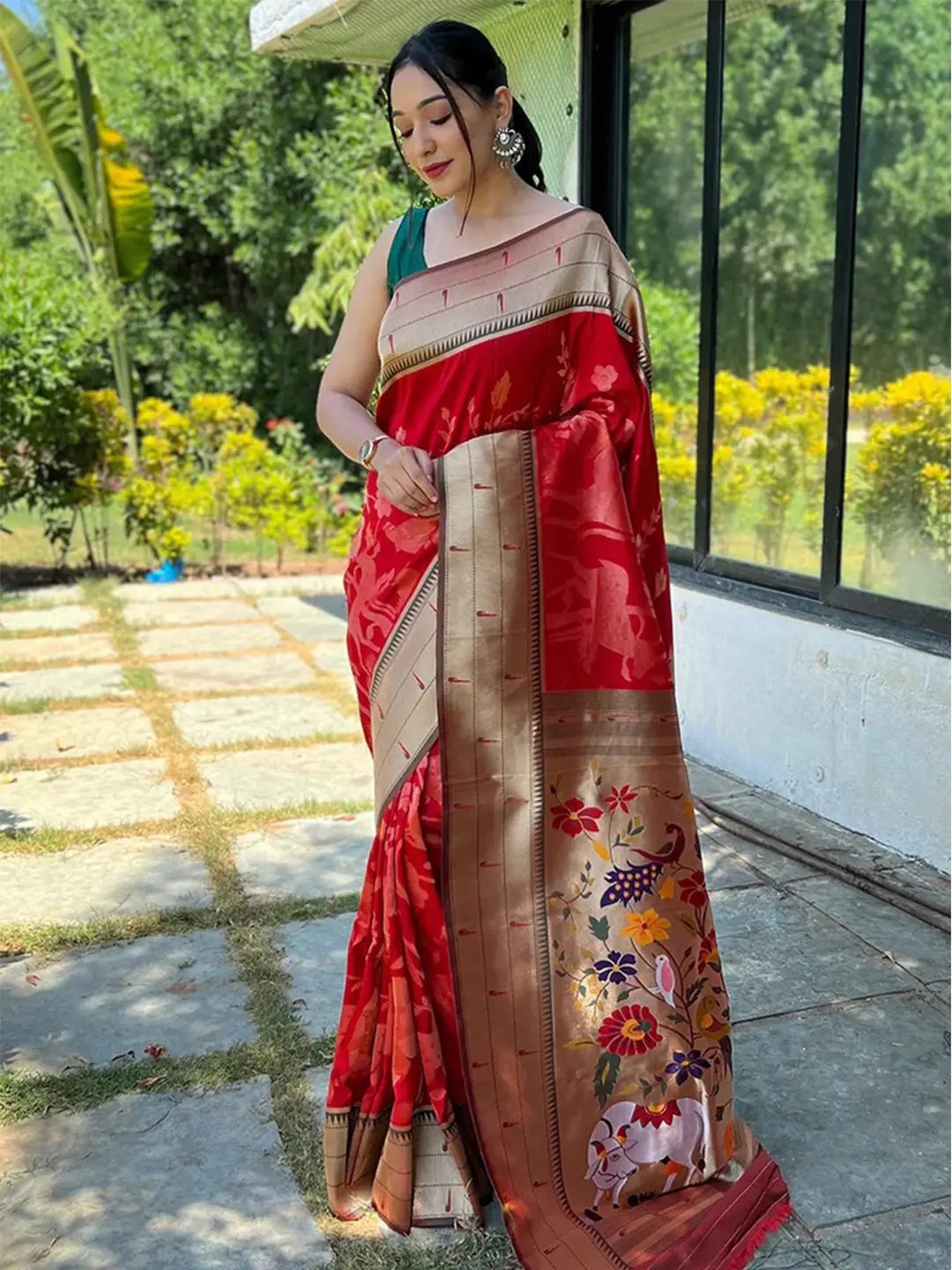 Inspired by the intricate temple art of Nathdwara, Pichwai sarees are hand-painted or digitally printed with depictions of Lord Krishna, lotuses, and cows.
Inspired by the intricate temple art of Nathdwara, Pichwai sarees are hand-painted or digitally printed with depictions of Lord Krishna, lotuses, and cows.
19. Ikkat Saree (Odisha, Telangana, Andhra Pradesh)

Ikkat sarees involve a resist-dyeing technique on yarns before weaving. Found in many regions, each state's ikkat has its own unique pattern and colour philosophy.
20. Kota Doria Saree (Rajasthan)
 Woven in a blend of cotton and silk with a distinctive square-check pattern called “khat,” Kota Doria sarees are breezy and elegant.
Woven in a blend of cotton and silk with a distinctive square-check pattern called “khat,” Kota Doria sarees are breezy and elegant.
21. Manipuri Silk Saree (Manipur)
 Known for their vibrant colours and comfortable texture, these sarees are made from mulberry silk and often feature traditional Meitei patterns.
Known for their vibrant colours and comfortable texture, these sarees are made from mulberry silk and often feature traditional Meitei patterns.
Conclusion
From the bold ikats of Telangana to the golden weaves of Banaras, India’s saree heritage is a treasure trove for fashion lovers. Whether you're building a wardrobe for daily wear or a bridal trousseau, these sarees offer timeless elegance, regional pride, and incredible craftsmanship.
Explore our latest collection of handpicked sarees from across India and celebrate the diversity of Indian tradition in every drape.




















